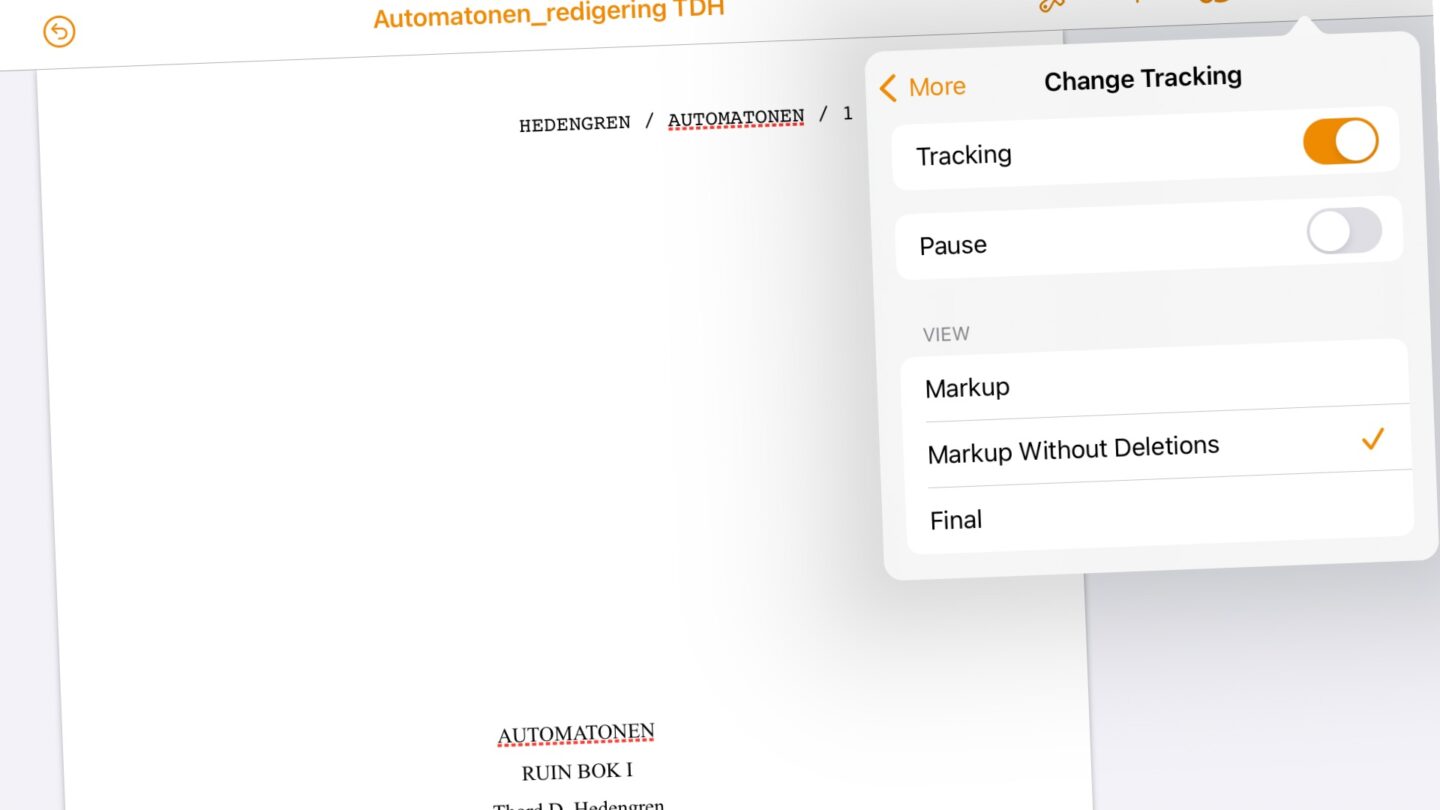🆓 This member post is free for all, thanks to our paying subscribers. Enjoy!
I’ve written a book. I’ve written several, as it were, and been published in multiple languages. Most of these books, however, has been technical literature of varying difficulty levels, as well as a couple of role-playing game related things. Yeah, I was a nerd growing up, shocker, right?
Anyway, I’ve recently switched to writing fiction in Swedish, and I’ve got a book contracted. I’m delighted, obviously, but as I mentioned in my Focused Work review, it comes at a price: You have to edit the bloody thing.
It should come as no surprise that I wrote the book on an iPad. Naturally, I’ll edit it on one as well, and I’d like to tell you a little bit about how that goes.
Track changes
Fellow writers with editors are most likely familiar with the track changes feature in Microsoft Word. It’s a way to make edits to a document, as well as to add commentary, before sending it along. Sort of like an asynchronous collaboration, since you email (more often than not) the file back and forth. In a world where Google Docs and, indeed, iCloud sharing exists, this sound awfully old-school, doesn’t it? Well, suck it up because this is what the publishing industry will jam down your throat, and you’ll just have to live with it.
Now, I’m not normally a Word user, and despite track changes being a Word feature (that’s also present elsewhere, to be fair), you’re not necessarily tied to the Word app. I prefer Pages (although we’ll speak more about this in the upcoming iPad office toolkit series), and luckily, it not only supports track changes, but it keeps those changes and commentary intact after exporting to docx, the format Word prefers. Because yeah, this is how it goes down:
- You get your manuscript back from the editor, full of red marks, commentary, and other useful stuff. This file will be from Word, thus being a
docxfile, with track changes enabled. - Open the file in Pages. The track changes feature will be enabled automatically, but when you save the file, it’ll be a
pagesfile, notdocxanymore. - Edit edit edit cry edit edit edit cry some more edit edit edit.
- When you’re done, export the file to
docxfrom Pages, and email it back to your editor. - Say a prayer, celebrate, cross every finger that the next wave of edits won’t be the one that kills you.
Did I mention that editing is a horrible business? Completely necessary for sure, but the experience, as a writer, isn’t pleasant.
Anyway, this is how I do it with this manuscript. I’ve heard of people having issues with large documents in Pages, but that was years and years ago, and it’s not something I’ve experienced on any iPad. The largest manuscript I’ve edited on an iPad was north of 140,000 words. If there’s an upper limit, it’ll be beyond that. In comparison, Google Docs didn’t use to manage large documents particularly well. I’d wager that Pages on icloud.com isn’t the place to edit a large manuscript, either. This is why I want it to be an app, not an online interface. The web browser is great for many things, but it’s limited, too, perhaps even more so on an iPad.
So, stick to Pages, or Word, for that matter – I’m sure it does track changes and large files well enough. I’ll find out some other time, for now, I just want to get this wave of editing over and done with. Wish me luck.



